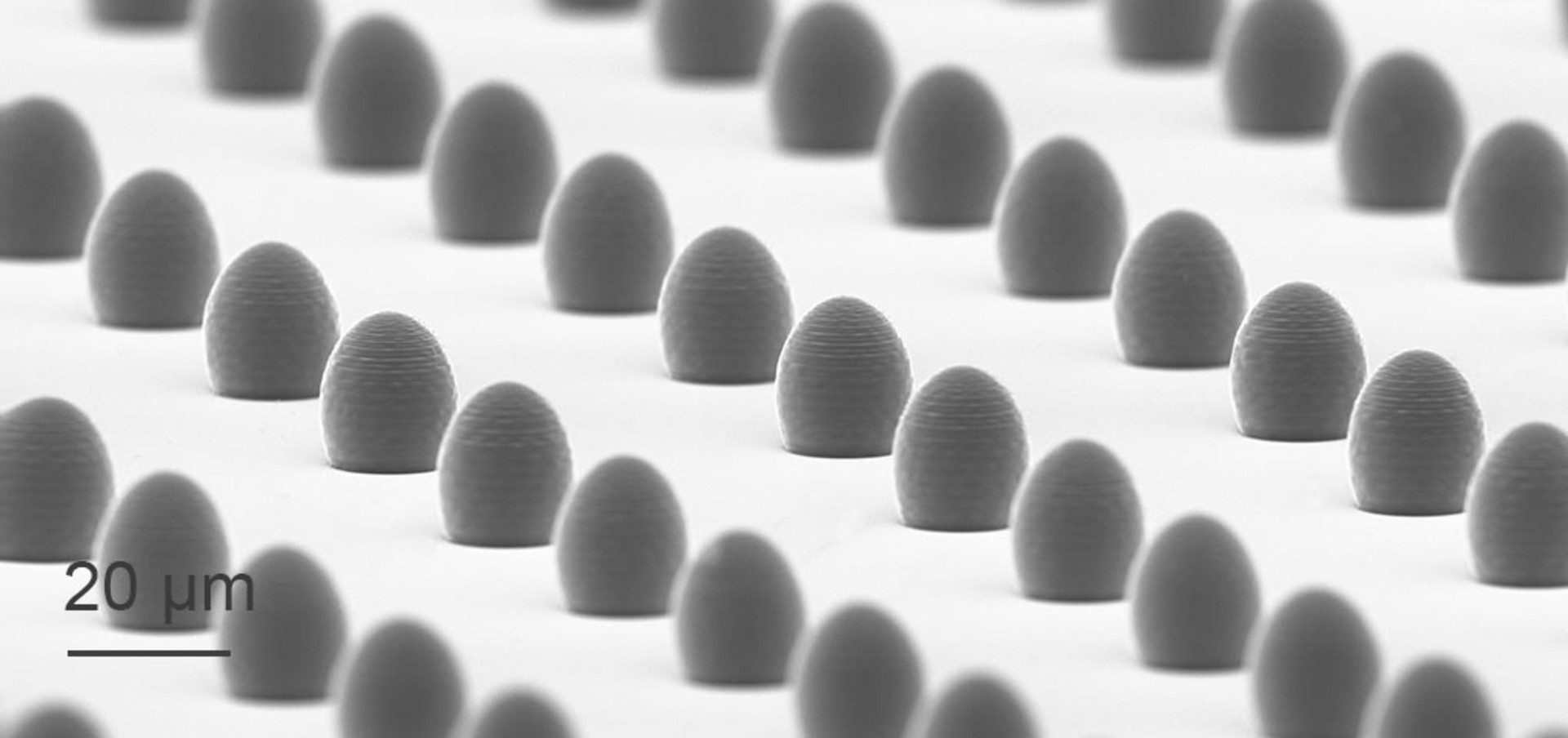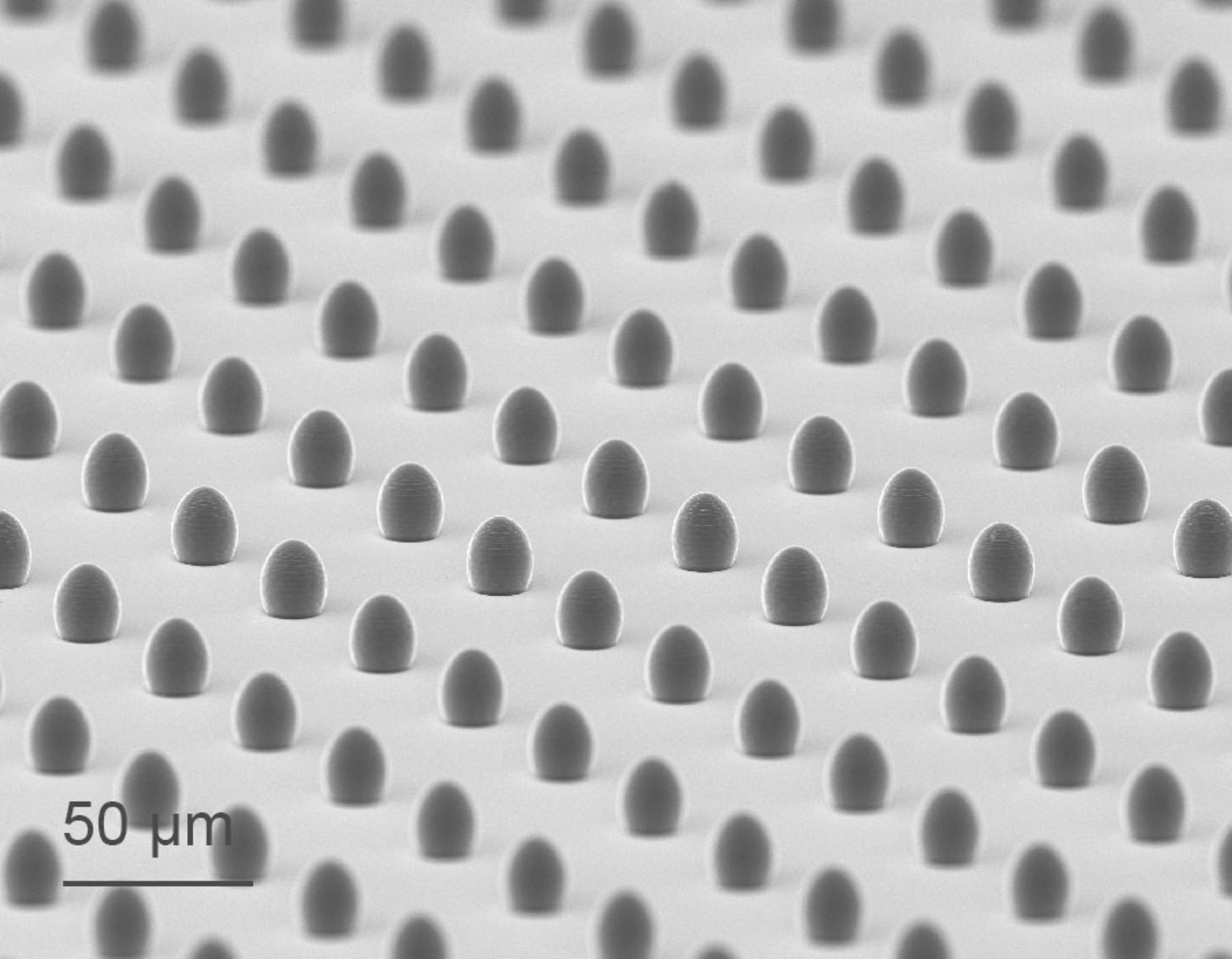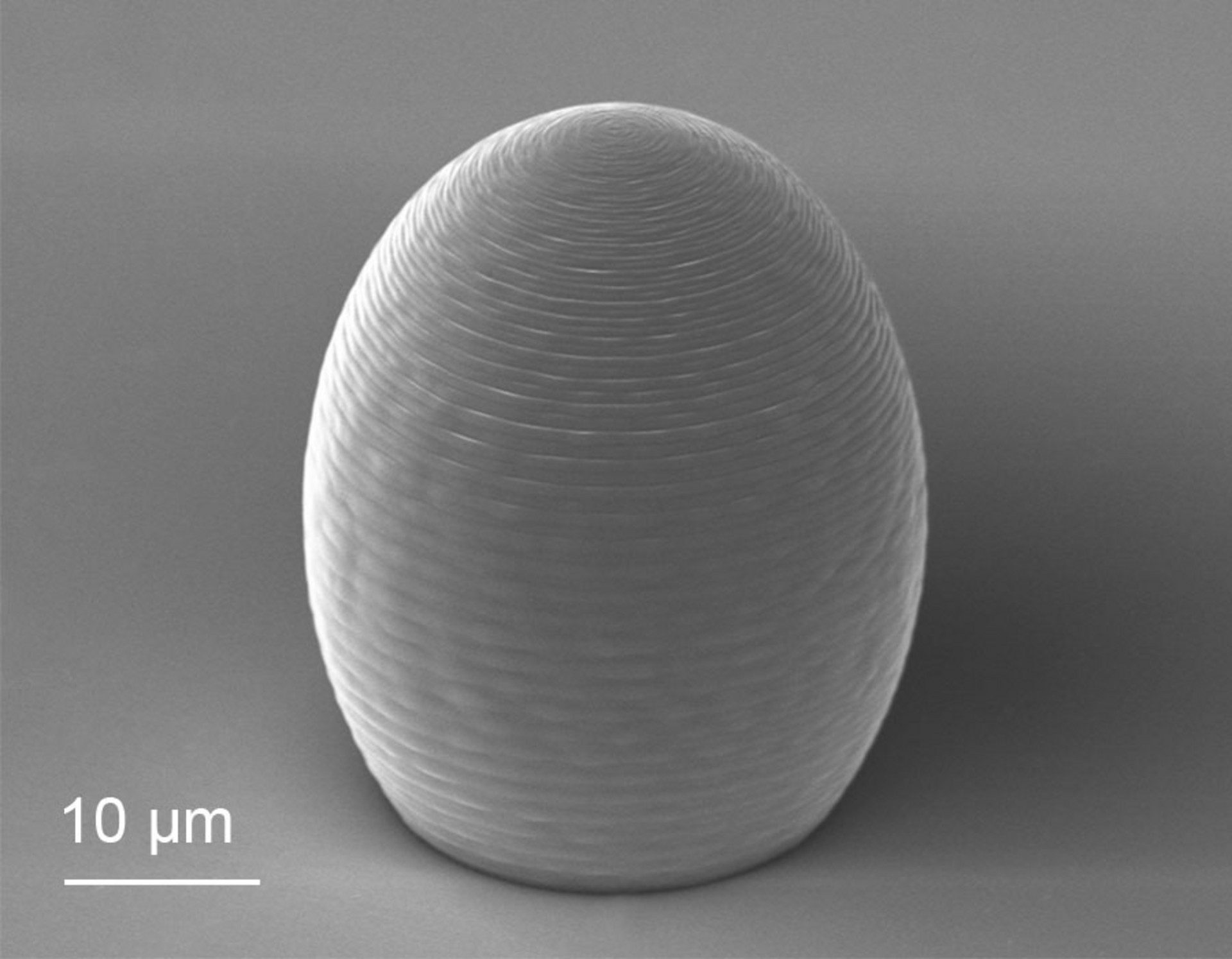An international research team from the Faculty of Physics, University of Warsaw, together with the National Institute for Materials Science in Tsukuba, Japan, and the Laboratoire National des Champs Magnétiques Intenses in Grenoble, France have designed tiny lenses with dimensions as small as a fraction of the human hair diameter. The 3D aspherical microlenses were easily manufactured using Nanoscribe’s 3D Microfabrication technology. With its 3D shape the microlenses increase the extraction of light emitted from semiconductor samples and reshape its outgoing part into an ultra-narrow beam. Thanks to this property, there is no longer a need for including a bulky microscope objective in the experimental setup when performing optical measurements. Moreover, the microlenses can be 3D-printed on top of various materials, including fragile graphene-like materials.
Advantages of miniaturized lenses
Microlenses enable plenty of applications, such as lighting, displays, sensing and medical devices to name a few. The miniaturization of lenses offers advantages such as a small footprint and low weight, reducing manufacturing and packaging costs to enable new optical functionalities and compact modules and devices.
The proposed aspherical microlens arrays are being used in spectroscopic measurements of single nanometer-sized light emitters such as quantum dots. Here typically, heavy microscope objectives of up to half of a kilogram and of nearly a handbreadth size are positioned at a distance of a few millimeters from the analysed sample. These impose significant limitations on many types of modern experiments, like measurements in pulsed high magnetic fields, at cryogenic temperatures or in microwave cavities. These difficulties can easily be lifted by the proposed aspherical microlenses, which are remarkable for their extremely small size and lightweight.
3D Microfabrication of microlens arrays
Nanoscribe’s 3D Microfabrication enables multiple novel optical designs with enormous design freedom. So this 3D printing technology makes it possible to produce any thinkable microlens shape with optical quality and smooth surfaces, such as spherical, aspherical, and even freeform lenses. Thanks to the high speed of this 3D printing technology hundreds of microlenses can be printed on a sample in short time. The single microlens elements can be arranged into regular and random arrays, which allows for novel functionalities of the microlens arrays.
Read the open-access publication here:
Ultra-long-working-distance spectroscopy of single nanostructures with aspherical solid immersion microlenses
This publication and further scientific publications on hundreds of research projects can be found in a powerful database with an underpinned keyword search in the Premium Resources section. Register for free and gain insights into the potential of Nanoscribe’s 3D Microfabrication technology for innovative applications and fundamental innovations in many areas.




